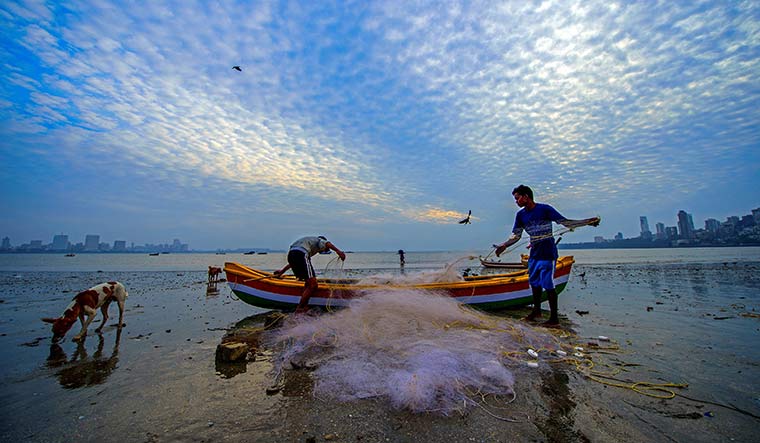
WITH A 7,517KM-long coastline and 1,382 islands, India has a unique maritime position. Around 95 per cent of its trade happens via sea. The country has 12 major ports and 187 non-major ones that together handle about 1,400 million tonnes of cargo a year. It also holds an exclusive economic zone of 20 lakh square kilometres that has significant recoverable resources of crude and natural gas. Indian coasts provide a livelihood for 40 lakh fishermen. These vast interests make it imperative for India to have a robust ‘blue economy’.
Introduced as a new economic policy in 1994 by Professor Gunter Pauli at United Nations University, Japan, blue economy reflected the need for developing sustainable models for using oceans for economic growth while preserving the health of the marine ecosystem. India had created a department for ocean development 13 years earlier. And, in the past three decades, it has made major technological advancements to gather data on various oceanographic features.
The government’s Vision of New India by 2030 highlights blue economy as one of the 10 core dimensions of growth. In 2021, India launched the Deep Ocean Mission to develop deep-sea technologies for sustainable use of ocean resources. India now has two contracts with the International Seabed Authority (ISBA) for deep ocean exploration of minerals (polymetallic nodules and hydrothermal sulphide) in the Indian Ocean.
Since technologies required for deep sea mining have strategic implications and are not commercially available, India is working on developing indigenous technologies. On July 27, the government said that it was finalising a national policy for the blue economy. The draft policy framework envisions sustainable development of coastal areas with optimal utilisation of all maritime domains.
“In the South Asian or global context at large, India is among the most formidable players in the blue economy ecosystem,” said Atul K. Thakur, a policy professional and writer. “With a rich water resources base and marine environment, India is waiting for its moment to broaden the ambit by linking the blue economy framework to the economic growth and environmental sustainability, besides serving the national security interests.”
There is an ocean of opportunities. But there are many challenges as well. Nilanjan Ghosh, director of Observer Research Foundation Kolkata Centre, said there were threats from global warming and climate change, ocean acidification, marine pollution, depletion of the fish stocks, degradation of the marine ecosystem, illegal and unregulated fishing, habitat destruction, chemical pollution, and oil spills. “We have to consider what is happening in the coastal belt also,” he said.
Thakur said India’s next success story might come from blue economy. “The opening of the new opportunities will revitalise the economic reforms as well. Moreover, a cleaner future will also help bring the Environmental, Social and Governance (ESG) equation into action where India’s response to the sustainable development needs is closely looked at globally. One stellar show with the blue economy will position India as a hope for the world.”